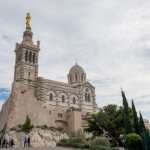The United Nations Educational, Scientific and Cultural Organization (UNESCO) was created in 1945 as a means to help ensure the preservation of natural, cultural, and intellectual heritage.
Since it’s inception, countries around the world have submitted their treasures to be included in the list, providing them with sources of funding to protect these lasting treasures. Making the grade involves meeting certain criteria such as:
- a masterpiece of human creative genius
- natural habitats for conservation of biological diversity
- being evaluated by the UNESCO experts to make the final cut
Of the over 1,000 awe-inspiring UNESCO World Heritage sites, you’ve probably visited some without even realizing it: The Statue of Liberty, Rome, Paris to name a few.
But others require a little more planning and as of this article no one has currently visited them all. This could be due to the continually growing list which adds up to 12 new sites each year.
World Cruises often include a multitude of UNESCO sites, here are just 5 to get you thinking about what you’d like to see next!
Mumbai: Elephanta Caves
The exceptional 7th-century rock-cut cave complex is a collection of shrines, courtyards, grand halls and porticos, filled with exquisite stone sculptures and reliefs of Hindu Gods and Goddesses. Once known as Gharapuri, or the Fortress City, the Portuguese renamed the island Elephanta after discovering a large stone elephant statue near the shore.
At the entrance to the caves is the famous Trimurti, or the celebrated trinity of Elephanta: Lord Brahma, the Creator; Lord Vishnu, the preserver; and Lord Shiva, the Destroyer.

Zanzibar: Stone Town
Stone Town, with its whitewashed, coral-rag houses, quaint shops, bazaars, mosques, courtyards and squares reflects the Swahili culture. This area of East Africa really began to thrive in the 19th century as a prominent coastal trading town.
Most of the streets within this old town are too narrow for cars, leaving tourists and locales to traverse them on bike, foot and motorcycle. While exploring the streets, don’t be surprised to find many Zanzibari houses with finely decorated wooden doors, with rich carvings and bas-reliefs, sometimes with big brass studs of Indian tradition.
Beyond the beautiful architecture of the homes, Stone Town includes former palaces of the sultans, fortifications, churches, mosques, and other institutional buildings making it a walking history lesson.
Chile: Easter Island
Deemed a UNESCO World Heritage site in 1995, Easter Island has the distinction of being one of the most remote islands in the entire world and its history is mysterious and fascinating.
Easter Island, named by the Dutch explorer Jacob Roggeveen who landed on Easter Sunday in 1722, is most famous for its highly recognizable extant monumental statues numbering 887 called Moai. It is thought that these statues were made and sited by the early Rapa Nui people as far back as 1100 AD.
Carved from volcanic ash native to the island, teams of four to six artisans produced a single moai using chisels representing a head of a deceased ancestor. The largest known moai weighs 82 tons. Transport and siting of the massive statues required an advanced pulley system and the aid of anywhere from 150 to 250 men. There is evidence that a rope connected to the moai was used to initiate a rocking motion—back and forth—in order to move the heavy statue. This may account for reports of the moai “walking” to an intended site.

Croatia: Diocletian Palace
The center of Split is dominated by the fourth Century AD Diocletian Palace, which includes more than 200 buildings, many of them constructed with lustrous white limestone from the nearby island of Brac. The palace is like a city within a city because it contains all sorts of residences, restaurants, museums, cathedrals and ancient Roman relics.
You might begin in the cellar, which in Diocletian’s day was used to store food and wine. The cellar also opened to the sea at that time, allowing noble guests to arrive by ship. Other highlights within the complex include the Cathedral of St. Domnius, which was originally built to be Diocletian’s mausoleum, and the Temple of Jupiter, which became a baptistery.
Jerusalem: Western Wall
The famous Western (Wailing) Wall, the holiest site in Judaism, believed to have been closest to where the Holy Ark once stood. It is the only remaining wall that surrounded the Second temple from an attack by the Romans in 70 CE.
Prayers at the wall were so heartfelt, that it took on the nickname of Wailing Wall. Nearby you can also tour the Christian Quarter, which rests beside a part of the famous Via Dolorosa. And even observe the pilgrimage of Muslims visiting the golden-topped Dome of the Rock, with its stunning blue and gold ceramic tiles, considered the third holiest site in Islam.

[su_button url=”//www.cruisespecialists.com/ViewFlaggedCruises.aspx?flag=11″ target=”blank” background=”#faa821″ size=”6″ center=”yes”]Find a travel agent to book your UNESCO vacation[/su_button]



